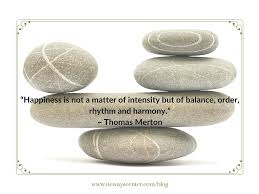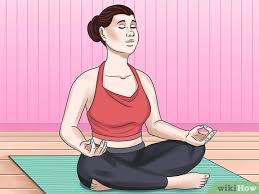Embracing a Balanced Lifestyle

But what does it mean in an ever-accelerating world when people try so hard to work towards a healthy work-life balance? Surely, life does not afford one an opportunity to pamper and care about the self while facing the realities of work, family, and other things. However, the concept of work-life balance plays a crucial role in maintaining and enhancing health, well-being, and goal fulfillment. In this blog, I propose to focus on components of a healthy life and how one would be able to adopt them.
What is a Balanced Lifestyle?
Life is supposed to be balanced, meaning that different areas of it have to be proportionate. Well being is maintaining harmony between several domains like employment, physical and mental and social well-being, and recreation. It is a sharper contrast to the healthy lifestyle that seeks to be perfect, as a balanced life is a number of conscious decisions for a healthy life in every context.
Key Components of a Balanced Lifestyle
Physical Health
Exercise: Exercise is critical in the prevention of diseases and general wellbeing. Ensure that you do at least 150 minutes of moderate exercise a week, whether it be swimming, cycling or even dancing.
Nutrition: A dietary plan with plenty of fruits and vegetables, whole grain foods, low fat proteins, and healthy fats is good for the body. Reduce the intake of foods that have been processed, sugars and detrimental fats.
Sleep: Sleep is highly essential for an individual’s health and wellbeing since it helps in physical and mental healing. For quality sleep, it is advisable to sleep for about 7-9 hours every day and ensure that you follow a daily sleep hygiene.
Cognitive and Affective Health
Stress Management: Find time to do stress-relief activities including meditation, mindfulness, or even deep breathing exercises. Stress is also eased through engaging in physical exercise and other amusement activities.
Emotional Health: Organize free time in such a way that you engage in pleasant and highly effective tasks. Develop personally and professionally positive social contacts and where necessary, lean on them. It is critical to recognize and deal with feelings rather than ignoring them.
Personal Growth: Participate in always those activities which are intellectually challenging and also personal enrichment. This could mean any activity the can help you expand your knowledge such as reading, learning new skills, or following hobbies that, inturn, interest you.
Work-Life Balance
Time Management: Plan your day, manage your time by ensuring that work does not interfere with personal life. Apply the suggestions like calendars and to-do lists that would help to keep all the tasks and events on schedule.
Breaks and Downtime: Taking time off from work, though small, within the work-shift can greatly improve production without the employees getting exhausted. Learn that it is right to free up time for leisure and exercises that are associated with rest.
Boundaries: Try to create clear specifics when it comes to interacting between work and other areas of life. It is also important not to work during leisure to have time for the exercise or any other leisure activity.
-
- Relationships and Social Connections
- Quality Time: Invest in meaningful relationships with family and friends. Spend quality time together, engage in meaningful conversations, and support each other’s well-being.
- Community Involvement: Participate in community activities or volunteer work to foster a sense of connection and purpose. Being involved in your community can enhance your social network and provide a sense of belonging.
- Leisure and Recreation
- Hobbies: Pursue hobbies and activities that you enjoy and that provide a sense of relaxation and fulfillment. Whether it’s gardening, painting, or playing a musical instrument, make time for activities that nourish your soul.
- Travel and Exploration: Exploring new places and experiences can broaden your perspective and provide a refreshing break from routine. Even short trips or local adventures can offer valuable relaxation and rejuvenation.
- Relationships and Social Connections
Practical Tips for Embracing a Balanced Lifestyle
- Set Realistic Goals: First, set actionable goals that are tiny, realistic, and meaningful for skill, belief, and expectation practices daily. It is advisable to introduce the alterations in the schedule progressively to encourage the right behaviors.

Create a Routine: Thus, the nutrition and food selectivity of the person is managed fairly periodically than in the absence of any schedule. Subdivide time into working time, time for physical activities, relaxation and time period to spend around other people in order to show maximum efficiency.
Practice Self-Care: Take time and do odd things which will help to relax and reduce stress levels. This could have been reading, using the washroom or being in the calm chamber and thinking about a word that is consolation.
Seek Support: One additionally ought to remember that if one has issues of balancing then he or she should not afraid to ask for help from friends or relatives also asking from professionals. Often friends are insufficient and seeking professional help through therapy, coaching or support groups may be highly effective.
Stay Flexible: Life is not a static situation as such balance must also also refer to the concept of flexibility. Symbiosis, meaning one has to adapt to the fact that one’s schedule changes as well as priorities for those changes.



